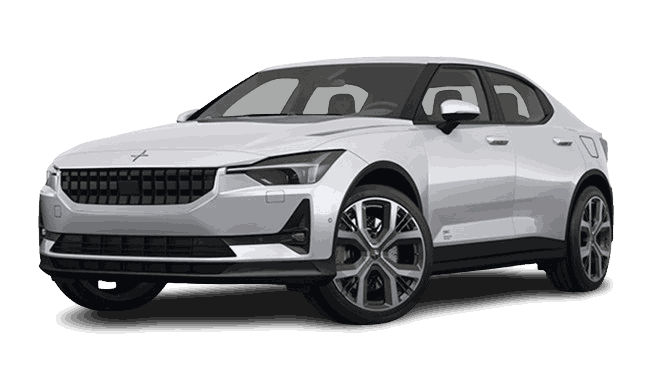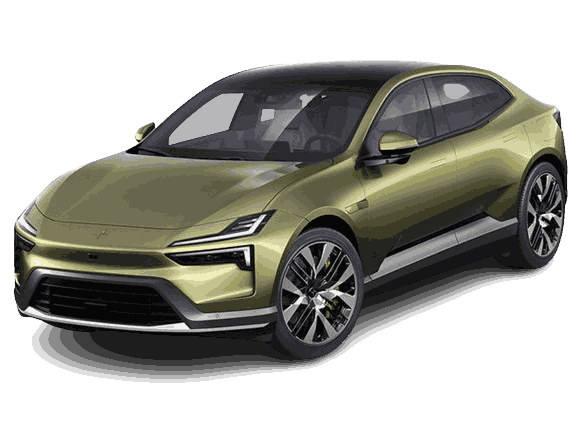Polestar - The Swedish Automaker
Polestar is a Swedish automotive brand specializing in electric performance cars. Originally a subsidiary of Volvo Cars and its parent company Geely, Polestar has evolved into a distinct entity focusing on high-performance electric vehicles. The brand’s lineup includes models like the Polestar 1, a hybrid grand tourer, and the Polestar 2, a fully electric compact executive car.
Polestar vehicles are known for their sleek designs, advanced technology features, and commitment to sustainability, with an emphasis on reducing carbon emissions through electrification.
From Motorsport Origins to Electric Pioneering
Evolution of Polestar
Polestar emerged from the rich racing heritage of Volvo Cars, evolving into a trailblazing force in the realm of electric performance vehicles. Born from a passion for motorsport excellence, Polestar initiated on a journey to redefine automotive luxury and sustainability.
- Origins and Early Years
Polestar traces its origins back to the racing division of Volvo Cars, initially established in 1996. Originally known as Flash Engineering, the team primarily focused on motorsport activities, including touring car racing in Sweden and Europe. Over the years, Flash Engineering gained recognition for its expertise in performance tuning and motorsport engineering, laying the foundation for Polestar’s future endeavors.
- Transformation and Expansion
In 2009, Volvo Cars acquired a majority stake in Flash Engineering, signaling a shift in focus towards performance-oriented road cars. This marked the beginning of Polestar’s transformation into a standalone performance brand. Leveraging Volvo’s engineering capabilities and motorsport heritage, Polestar introduced its first production models, including performance-tuned versions of existing Volvo vehicles. These early offerings garnered attention for their combination of Swedish design, driving dynamics, and enhanced performance.
- Elevation to Electric Pioneering
The turning point for Polestar came in 2017 when Volvo Cars and its parent company, Geely Holding Group, announced Polestar as a separate electrified performance brand. This strategic move aligned with the global automotive industry’s shift towards electrification and sustainable mobility solutions. Polestar unveiled its first standalone model, the Polestar 1, a high-performance plug-in hybrid grand tourer, featuring advanced electric powertrains and carbon-fiber construction. Following the success of the Polestar 1, the brand launched its second model, the Polestar 2, in 2019, marking its full transition to electric vehicles. With a commitment to innovation, sustainability, and cutting-edge design, Polestar continues to push the boundaries of electric mobility and redefine the future of performance driving.
With a steadfast commitment to innovation and sustainability, Polestar stands at the forefront of the electric mobility revolution, poised to shape the future of performance driving and lead the transition to a more sustainable transportation landscape.

Leading the Charge in Electric Mobility
Polestar Vehicle Lineup
Electric Vehicles - EVs
- Polestar 2:
- The Polestar 2 is a sporty five-door electric car that offers driving thrills and competes with Tesla's Model 3. It boasts a sleek design and a focus on performance.
- Polestar 3:
- This upcoming electric SUV, expected in late 2023, is set to be a rival for established luxury SUVs. Expect a spacious interior, innovative technology, and a focus on comfort and performance.
- Polestar 5:
- Gear up for the 2024 Polestar 5, a high-performance electric GT with a luxurious interior made from sustainable materials. With an estimated 400-mile range and a futuristic design inspired by the Precept concept, it promises a thrilling driving experience.
- Polestar 6:
- Turn heads with the Polestar 6, a stunning electric roadster coming in 2026. This two-door convertible combines art and technology, offering open-air exhilaration with zero emissions. Be among the first to own one with the exclusive Polestar 6 LA Concept edition.
Need Polestar Repairs? Contact Us & Book an Appointment Now
A Closer Look at Polestar's Advanced Features
Polester Car Advanced Tech
Polestar vehicles are renowned for integrating state-of-the-art technology to enhance performance, safety, and overall driving experience. Here are some key advanced technologies found in Polestar models:
Electric Propulsion Systems:
Polestar vehicles feature advanced electric propulsion systems designed to deliver exhilarating performance while minimizing environmental impact. With powerful electric motors and sophisticated battery management systems, Polestar achieves impressive acceleration, responsiveness, and range.
Android Automotive OS:
Polestar is among the first automotive brands to adopt the Android Automotive operating system, offering seamless integration of Google services and apps. This innovative platform provides intuitive infotainment controls, voice-activated commands, and access to a wide range of digital services, including navigation, music streaming, and smart home integration.
Polestar Digital Key:
Polestar vehicles offer a convenient and secure digital key system that allows owners to unlock and start their cars using their smartphones. This feature enhances convenience and flexibility while ensuring robust security measures to protect against unauthorized access.
Polestar Pilot Assist:
Polestar models are equipped with advanced driver assistance systems, including Polestar Pilot Assist, which combines adaptive cruise control and lane-keeping assist to provide semi-autonomous driving capabilities. This technology helps enhance safety and reduce driver fatigue during long journeys by assisting with steering, acceleration, and braking in certain conditions.
High-Performance Materials:
Polestar utilizes high-performance materials such as carbon fiber and lightweight alloys to optimize strength, rigidity, and efficiency. These materials contribute to Polestar’s commitment to sustainability by reducing weight and improving energy efficiency without compromising safety or performance.
Digital Instrument Cluster:
Polestar vehicles feature a digital instrument cluster that provides customizable displays of key driving information, including speed, navigation directions, and vehicle status. This high-resolution display offers crisp graphics and intuitive controls, enhancing driver awareness and engagement.
OTA Updates:
Polestar employs over-the-air (OTA) software updates to continuously improve vehicle performance, add new features, and enhance cybersecurity. This allows Polestar to deliver regular updates remotely, ensuring that owners always have access to the latest technology and software advancements without the need for dealership visits.
Through its relentless pursuit of innovation and commitment to sustainability, Polestar continues to push the boundaries of automotive technology, shaping the future of electric mobility with cutting-edge features and advancements.
Polestar's Vision for the Future
The Future of Polestar Cars

As Polestar continues to evolve and innovate, the future of Polestar cars promises to be a fascinating journey into the realms of sustainability, technology, and performance. Here are some key aspects shaping the future of Polestar vehicles:
Advancements in Electric Propulsion:
Polestar is committed to advancing electric propulsion technology, with a focus on enhancing battery efficiency, range, and charging infrastructure. Future Polestar models are likely to feature even more powerful electric drivetrains, enabling faster acceleration and longer driving ranges to meet the evolving needs of consumers.
Autonomous Driving Capabilities:
With rapid advancements in autonomous driving technology, Polestar is poised to integrate more sophisticated driver assistance systems and autonomous features into its vehicles. Future Polestar models may offer higher levels of autonomy, allowing for hands-free driving in select conditions and enhancing overall safety and convenience.
Enhanced Connectivity and Digital Services:
Polestar will continue to leverage its partnership with Google to enhance connectivity and digital services in its vehicles. Future Polestar cars are expected to offer seamless integration with smart devices, cloud-based services, and advanced infotainment systems, providing occupants with personalized and immersive driving experiences.
Sustainable Materials and Manufacturing:
Sustainability will remain a core focus for Polestar in the future, with an emphasis on using eco-friendly materials and adopting sustainable manufacturing practices. Future Polestar models may incorporate innovative materials such as recycled plastics, natural fibers, and bio-based composites to minimize environmental impact throughout the vehicle’s lifecycle.
Expansion of the Model Lineup:
Polestar is likely to expand its model lineup in the future, offering a diverse range of electric vehicles to cater to different market segments and consumer preferences. This expansion may include compact electric SUVs, performance-oriented electric sports cars, and luxury electric sedans, further solidifying Polestar’s position as a leading player in the electric vehicle market.
Collaborations and Partnerships:
Polestar will continue to collaborate with industry partners, technology companies, and sustainable initiatives to drive innovation and accelerate the transition to electric mobility. Future collaborations may involve joint ventures for battery technology development, charging infrastructure expansion, and sustainable mobility solutions.
Overall, the future of Polestar cars is characterized by a relentless pursuit of excellence, sustainability, and innovation, as the brand continues to push the boundaries of electric mobility and redefine the automotive industry’s future.
Frequently Asked Questions
Polestar FAQs
Polestar is a Swedish automotive brand specializing in electric performance vehicles. Originally a subsidiary of Volvo Cars, it has since evolved into a separate entity focused on electrification and sustainability.
The Polestar logo symbolizes the North Star, representing guidance, exploration, and innovation.
The Polestar 1 is a plug-in hybrid grand tourer, featuring a powerful electric drivetrain supplemented by a gasoline engine. It offers impressive performance and a luxurious driving experience.
No, the Polestar 1 is a plug-in hybrid vehicle, combining electric power with a gasoline engine for extended range and performance.
Yes, Polestar vehicles typically offer all-wheel drive capabilities, providing enhanced traction and stability in various driving conditions.
Yes, Polestar provides home charging solutions for customers, including wall-mounted chargers and installation services to facilitate convenient charging at home.
The range of Polestar electric vehicles varies depending on the model and driving conditions. The Polestar 2, for example, offers a range of up to 275 miles.
Yes, Polestar vehicles receive over-the-air software updates, allowing for continuous improvements, bug fixes, and the addition of new features remotely.
